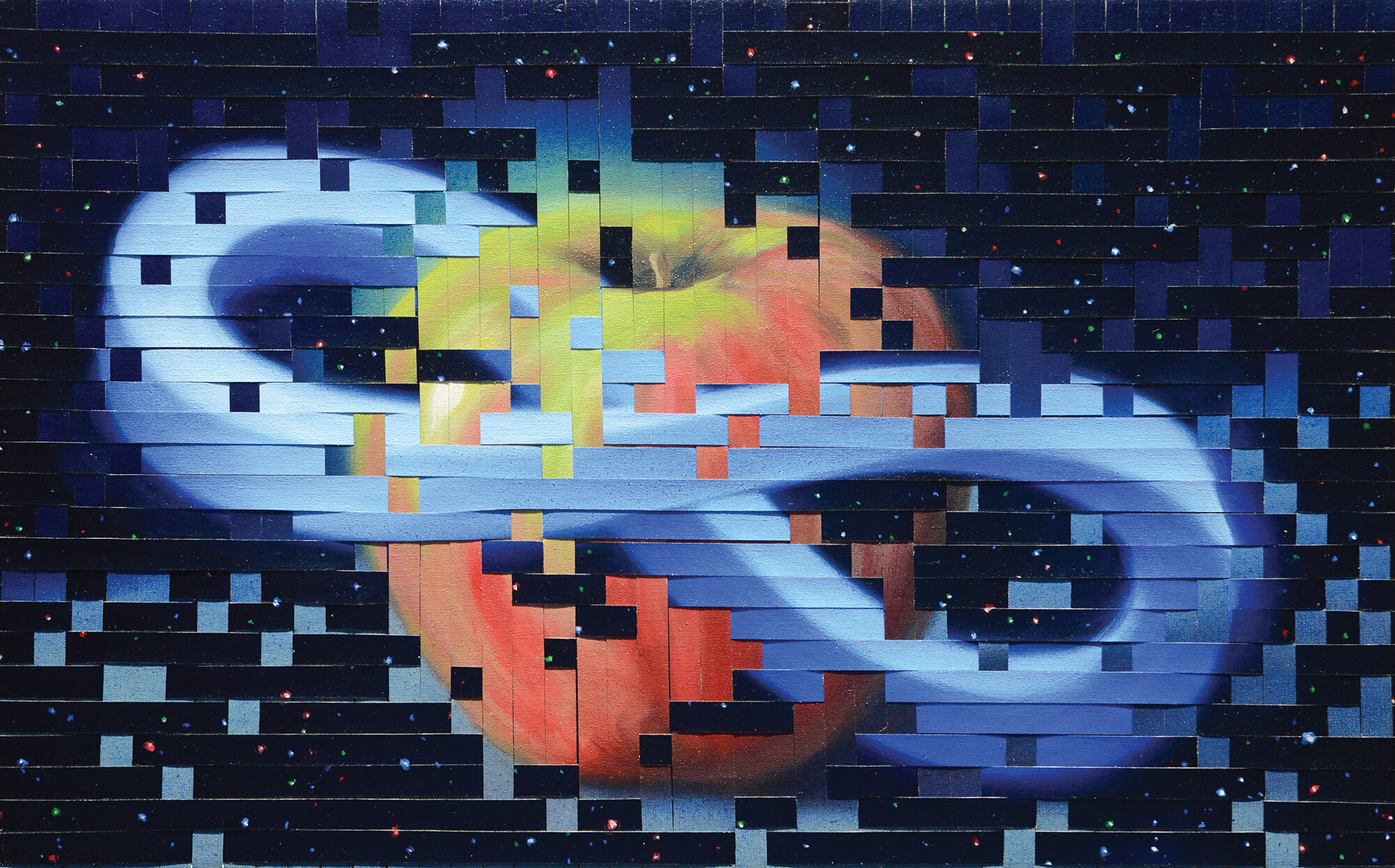The Perfect Ratio
A series of illustrations created to fulfill my MFA thesis at the Hartford Art School. These paintings each illustrate a chapter (plus an introduction) in the book Seven Brief Lessons On Physics, by Carlo Rovelli. The medium is oil paint and they each measure 22.5 x 14” (vertically, or horizontally, the golden ratio).
Hover over each image for an excerpt from the book and some insight on the imagery.

“Every so often I would raise my eyes from the book and look at the glittering sea: it seemed to me that I was actually seeing the curvature of space and time imagined by Einstein. As if by magic: as if a friend were whispering into my ear an extraordinary hidden truth, suddenly raising the veil of reality to disclose a simpler, deeper order. Ever since we discovered that Earth is round and turns like a mad spinning top, we have understood that reality is not as it appears to us: every time we glimpse a new aspect of it, it is a deeply emotional experience. Another veil has fallen.”

“Space curves where there is matter. That is it. The equation fits into half a line, and there is nothing more. A vision—that space curves—became an equation. But within this equation there is a teeming universe. And here the magical richness of the theory opens up into a phantasmagorical succession of predictions that resemble the delirious ravings of a madman but have all turned out to be true. To begin with, the equation describes how space bends around a star. Due to this curvature, not only do planets orbit around the star but light stops moving in a straight line and deviates. But it isn’t only space that curves, time does too. And this is just the beginning.”

“Heisenberg imagined that electrons do not always exist. They only exist when someone or something watches them, or better, when they are interacting with something else. They materialize in a place, with a calculable probability, when colliding with something else. The “quantum leaps” from one orbit to another are the only means they have of being “real”: an electron is a set of jumps from one interaction to another. When nothing disturbs it, it is not in any precise place. It is not in a “place” at all.
It’s as if God had not designed reality with a line that was heavily scored but just dotted it with a faint outline.”

“Science begins with a vision. Scientific thought is fed by the capacity to “see” things differently that they have previously been seen. ... The growth of our knowledge [of the universe] continued, and with improved instruments it was soon learned that the solar system itself is only one among a vast number of others, and that the sun is no more than a star like others. An infinitesimal speck in a vast cloud of one hundred billion stars—the Galaxy. ... Is there anything else? Was there something before? ... Do other similar universes exist, or different ones? We do not know.”

“A handful of elementary ingredients that act like bricks in a gigantic Lego set, and with which the entire material reality surrounding us is constructed. [These] elementary particles, which vibrate and fluctuate constantly between existence and nonexistence and swarm in space, even when it seems that there is nothing there, combine together to infinity like the letters of a cosmic alphabet to tell the immense history of galaxies; of the innumerable stars; of sunlight; of mountains, woods, and fields of grain; of the smiling faces of the young at parties; and of the night sky studded with stars.”

“
Can we build a conceptual framework for thinking about the world that is compatible with what we have learned about it from both theories? Loop quantum gravity is an endeavor to combine general relativity and quantum mechanics. It is a cautious attempt because it uses only hypotheses already contained within these theories, suitably rewritten to make them compatible. But its consequences are radical: a further profound modification of the way we look at the structure of reality. ... Where are these quanta of space? Nowhere. They are not in space because they are themselves the space. Space is created by the linking of these individual quanta of gravity. Once again, the world seems to be less about objects than about interactive relationships.”

“The heat of black holes is a quantum effect upon an object, the black hole, which is gravitational in nature. It is the individual quanta of space, the elementary grains of space, the vibrating “molecules,” that heat the surface of black holes and generate black hole heat. This phenomenon involves all three sides of the problem: quantum mechanics, general relativity, and thermal science. The heat of black holes is like the Rosetta stone of physics, written in a combination of three languages—quantum, gravitational, and thermodynamic—still awaiting decipherment in order to reveal the true nature of time.”

“ “We,” human beings, are first and foremost the subjects who do the observing of this world, the collective makes of the photograph of reality that I have tried to compose. We are nodes in a network of exchanges (of which this present book is an example) through which we pass images, tools information, and knowledge. We are also an integral part of the world that we perceive; we are not external observers. We are situated within it. Our view of it is from within it’s midst. We are made up of the same atoms and the same light signals as are exchanged beween pine trees in the mountains and stars in the galaxies. We are the source of amaazement in our own eyes. Nature is our home, and in nature we are at home. Here on the edge of what we know, in contact with the ocean of the unknown, shines the mystery and the beauty of the world. And it’s breathtaking.”








